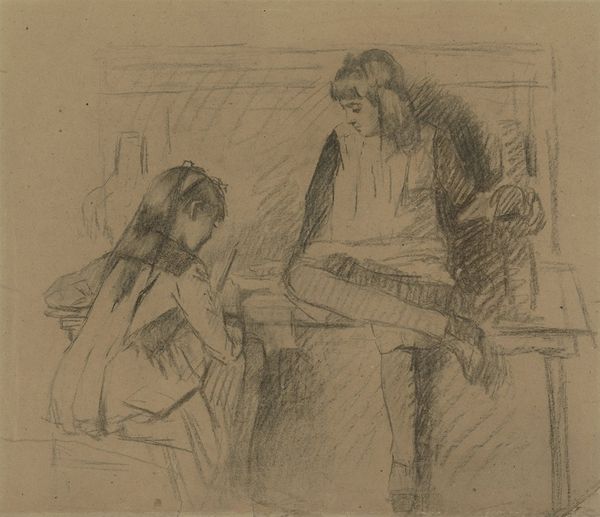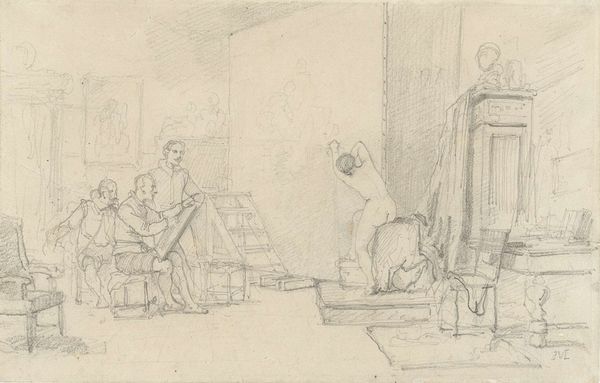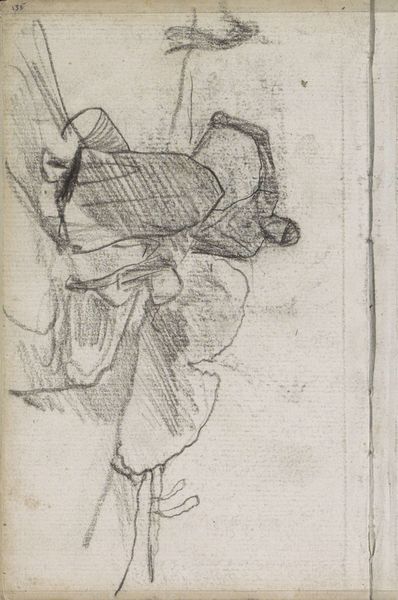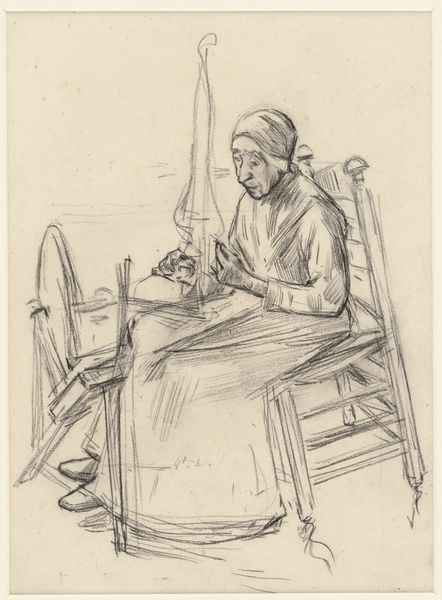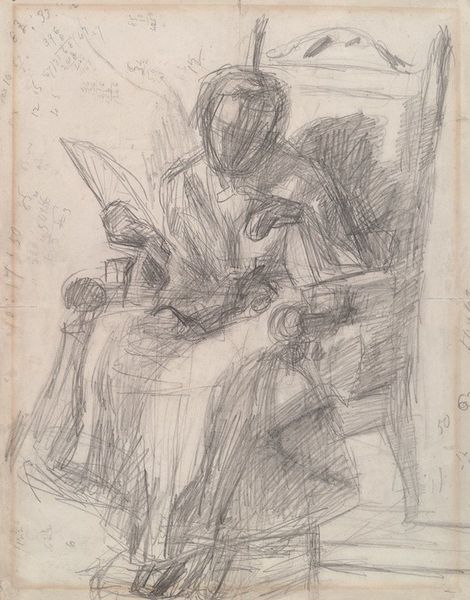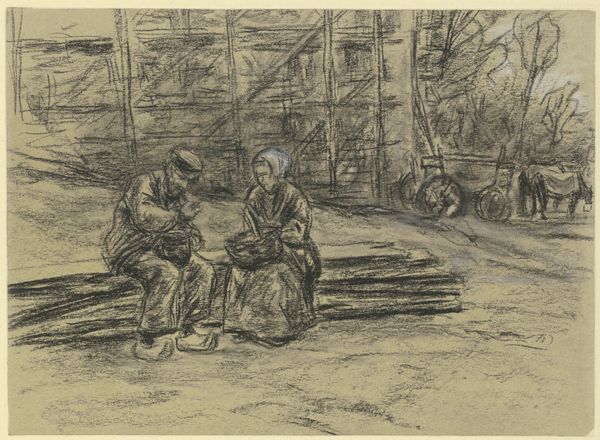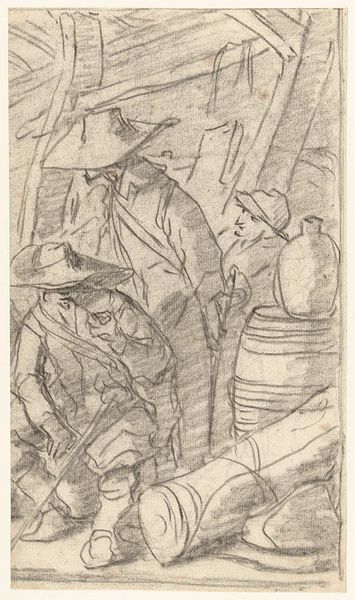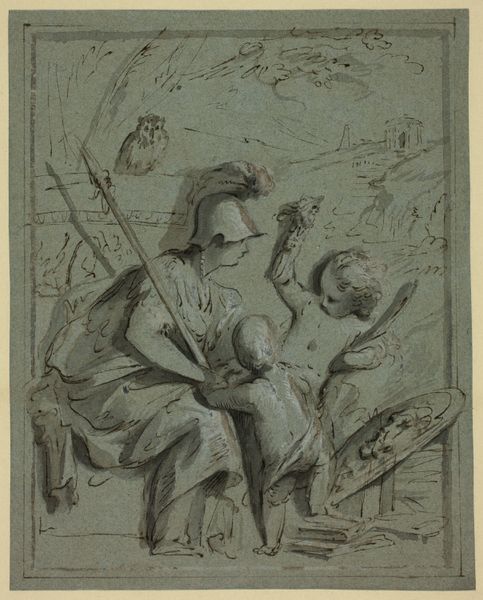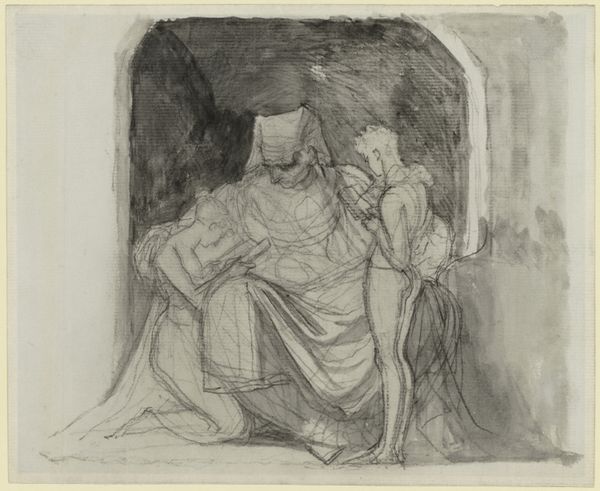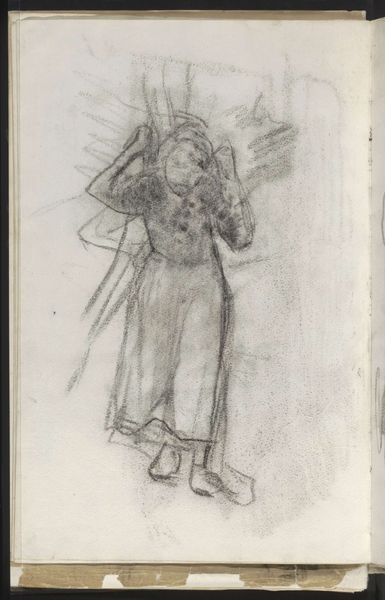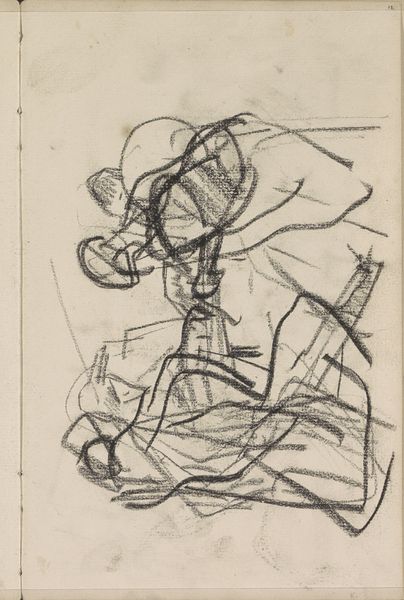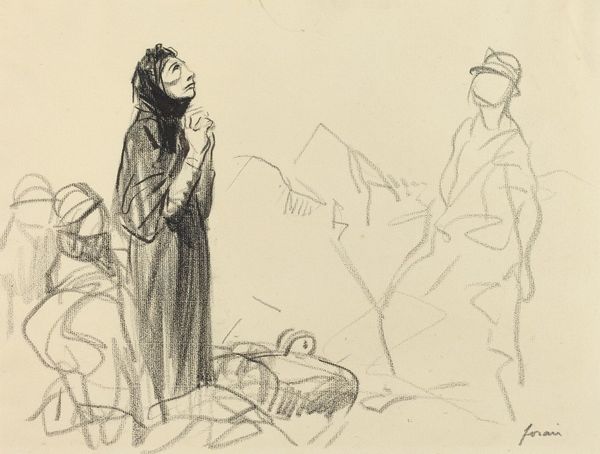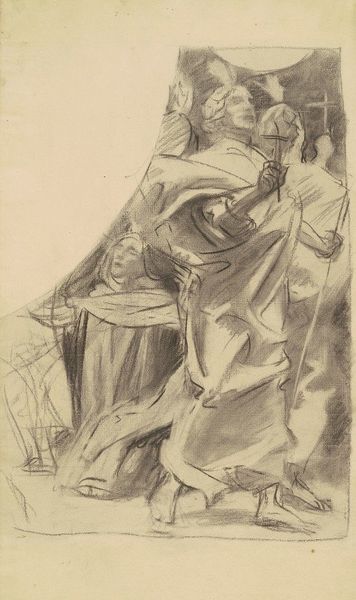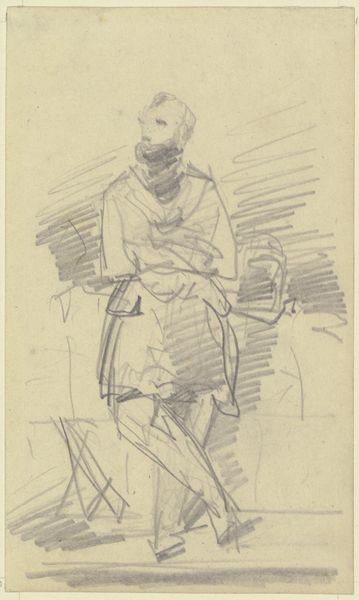
drawing, pencil
#
portrait
#
drawing
#
soviet-nonconformist-art
#
pencil
#
genre-painting
#
realism
Dimensions: 31.8 x 38.6 cm
Copyright: Pyotr Konchalovsky,Fair Use
Curator: Here we have Pyotr Konchalovsky's 1926 drawing, "Spinner. Drawing for the painting 'spinner'," rendered in pencil. The composition centers on a young woman seated at a spinning wheel. Editor: It has such a hushed, almost melancholic feel, don’t you think? The loose sketch lines give it an unfinished quality. There’s something both intimate and isolating about it. Curator: Absolutely. And if we situate this piece within the context of Soviet Nonconformist Art, we begin to understand the tension inherent in portraying such a quotidian scene. The "spinner," an ostensibly simple, traditionally feminine role, becomes a point of reflection on labor, gender, and the socio-political expectations of the era. Editor: Focusing on that labor aspect – look at the skeletal structure of the spinning wheel itself. Konchalovsky's use of line really highlights the crafted nature of this technology, its reliance on human power. It speaks volumes about pre-industrial modes of production, contrasting, perhaps subtly, with the rise of mechanization happening simultaneously. Curator: Indeed. And the woman's gaze is introspective. It feels far removed from the romanticized portrayals of peasant life often used for propaganda. Her bare feet, the simplicity of her clothing... there's an authenticity here, a refusal to idealize. It pushes back against any sanitized narrative. Editor: I agree. There’s a directness in the observation that foregrounds the actual making of something. You almost feel like you're witnessing the labor, participating in it alongside her. The bare feet speak volumes about connection to earth and the means through which everyday labor impacts those that must practice it. Curator: Yes, and beyond just representing this individual, it represents generations of women whose labor went largely unseen, unheard. Their contributions often dismissed in dominant narratives. I feel it holds this woman, and by extension others like her, in profound esteem, which resonates across lines of gender and class. Editor: Thinking about the artistic process too – pencil as the primary material creates a textural element. Its reliance on graphite gives the drawing a gray hue, that in itself almost alludes to industrial materiality. It provides additional substance beyond representation. Curator: So, we began by observing what seems a straightforward image of everyday life. With a closer look, we have unearthed rich layers of meaning relating to gender, labor, and even resistance to prescribed social roles. Editor: Exactly. Konchalovsky delivers not just a snapshot of a woman spinning but an entire commentary on work, material, and the complex sociopolitical tapestry of his time.
Comments
No comments
Be the first to comment and join the conversation on the ultimate creative platform.
